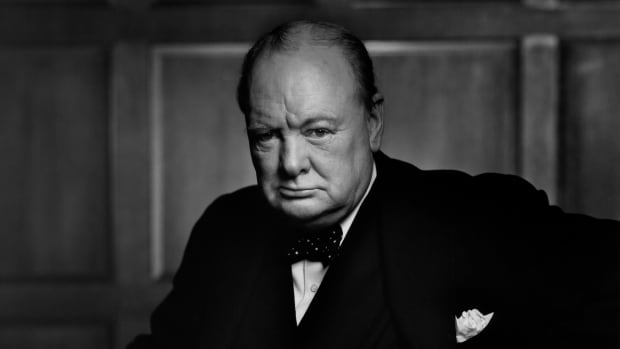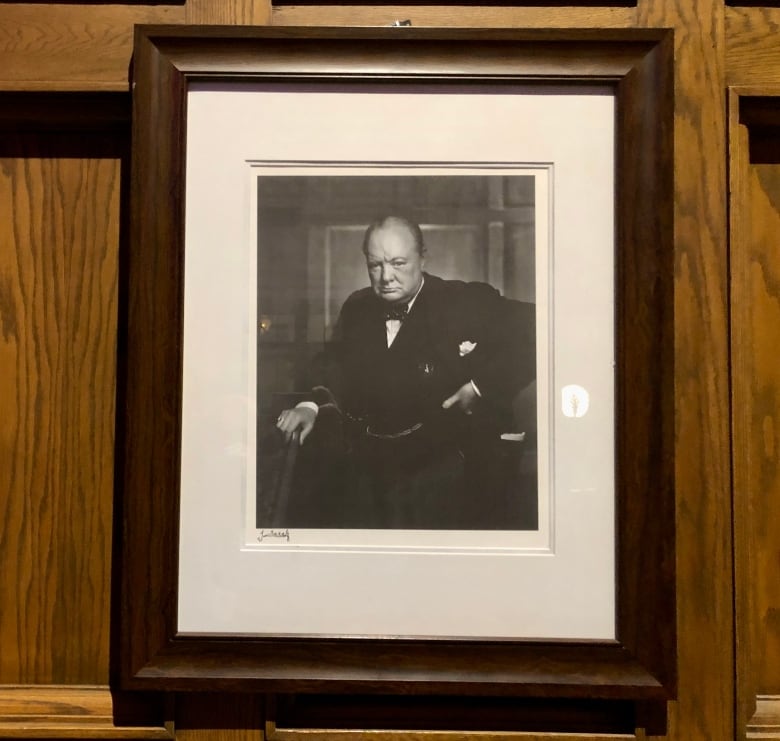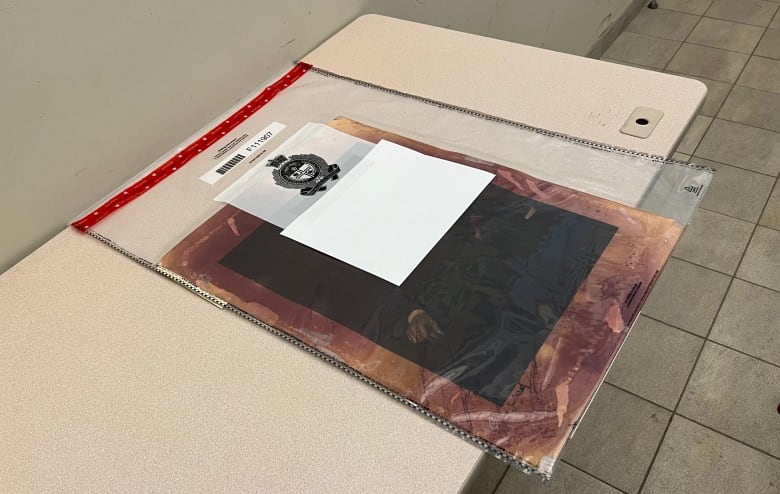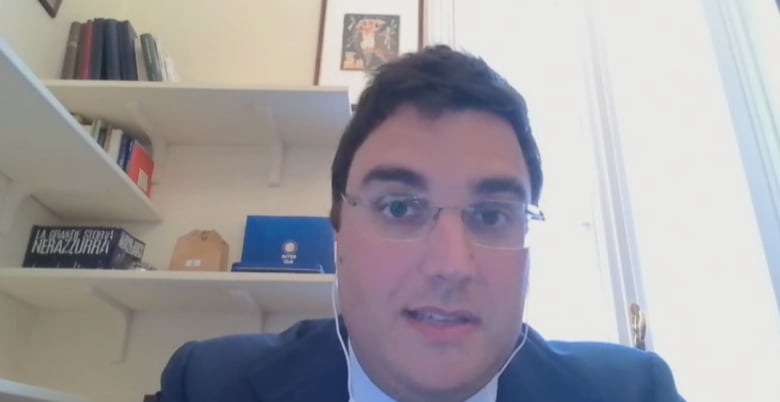
New details are emerging about both the man accused and the unwitting buyer in the high-profile heist of a 1941 portrait of Britain’s wartime prime minister Sir Winston Churchill by famed Canadian photographer Yousuf Karsh.
The scowling black and white portrait, known as the Roaring Lion, was first reported stolen from the lobby of Ottawa’s Fairmont Château Laurier hotel in August 2022. Ottawa police later concluded the theft occurred sometime between Christmas and early January of that year.
Jeffrey Wood, 43, is accused of stealing the original portrait and replacing it with a fake, complete with Karsh’s forged signature.
According to court records obtained by CBC, Wood is facing six charges including possession of property obtained by crime and possession of property obtained by crime for the purpose of trafficking. None of the charges against him have been tested in court.
When Ottawa police announced the charges Wednesday, they claimed a publication ban prevented them from disclosing Wood’s name, but that was not the case. Police have not disclosed how they tracked down the portrait, nor how they linked the theft to the suspect.
Wood, whose address is listed as unknown in the court records, is expected to appear in an Ottawa courtroom later this month, where he’ll be represented by high-profile criminal defence lawyer Lawrence Greenspon.
Earlier this week, CBC learned the original portrait had been discovered in Italy. Investigators allege Wood trafficked the artwork on May 19, 2022. He was arrested by Ottawa police in April.
Following a short stint at the Ottawa-Carleton Detention Centre, Wood was released on bail after submitting to 24-hour GPS monitoring. He posted a $5,000 bond, and three sureties also posted $5,000 bonds to secure his release.
Wood was ordered to live with two of the sureties — both retired Ontario Provincial Police officers, according to court records — at their home in the outskirts of the small municipality of Powassan, Ont., just south of North Bay.
The third surety, a woman in Ottawa, declined to comment when reached by phone Thursday.
Among other conditions of Wood’s release are that he must remain in Ontario and cannot apply for a passport or any other travel documents or permits.
Wood is forbidden from going to the Château Laurier or contact any hotel staff, barred from possessing weapons, and can’t stray farther than 50 metres from his sureties’ residence unless they accompany him.
Even with his sureties, he can’t travel farther than 50 kilometres from except for medical needs, to attend court or to meet with his lawyers.

Buyer unaware of portrait’s provenance
Meanwhile in Genoa, Italy, Nicola Cassinelli said he didn’t realize he had a famous piece of art hanging in his living room.
Cassinelli, 34, a lawyer who describes himself as a passionate but small-scale art collector, was browsing an online Sotheby’s catalogue in May 2022 when he stumbled upon what was described as a signed copy of Karsh’s Roaring Lion.
I realized that not only a piece of art, but a piece of history, was hanging in my living room, and that was really emotional to me.– Nicola Cassinelli
“I decided to bid and I was so, so lucky that I won that artwork,” he told CBC. “Of course, I thought I was buying just one of the several copies of the Roaring Lion that you can find online and in several auctions.”
Cassinelli said he paid less than $10,000 plus commission for the portrait, which was soon hanging on his wall.
“It fit very well in a corner in my living room that needed a small piece of art to be put in,” Casselini said.
Five months later, Cassinelli received a phone call from the auction house asking if they could put him in touch with Canadian authorities. Confused, Cassinelli went online and soon learned of the theft in Ottawa.
“I realized that not only a piece of art, but a piece of history, was hanging in my living room, and that was really emotional to me,” he said.
Cassinelli said he was asked by both Sotheby’s and Canadian police not to sell or otherwise dispose of the portrait, but as the months passed with no further instruction, he began to think he might have a copy after all.
Then in January, Ottawa police contacted him again and confirmed he had the original, valued by some art experts at six figures.

‘I had a sort of Mona Lisa’
Despite having scored such an incredible deal, Cassinelli said it would have “been a crime” to keep the Roaring Lion from its rightful owners, the Château Laurier and the Karsh estate, and will formally hand it over to Canadian authorities in Rome next week.
He said knowing its true value wouldn’t have made a difference to him.
“I realized that for almost two years I had a sort of Mona Lisa in my living room, and even if nobody knew it, the people, friends and family that visit me at home enjoy the piece of history,” he said.

Cassinelli said the day he agreed to return the portrait, he purchased an online poster of the same famous image for about $50. It now hangs where the Roaring Lion once did.
“I also can confess that nobody notices that it’s not the original one,” he said.
Cassinelli said he’s planning to visit Ottawa soon, and will stay at the Château Laurier.
“The first thing I will want to see in October is my portrait, because I still would like to say it’s my portrait, because I bought it,” he said.
“Let’s say that I gifted it to the hotel, but a piece of that portrait is still mine, at least in my heart, in my memories.”